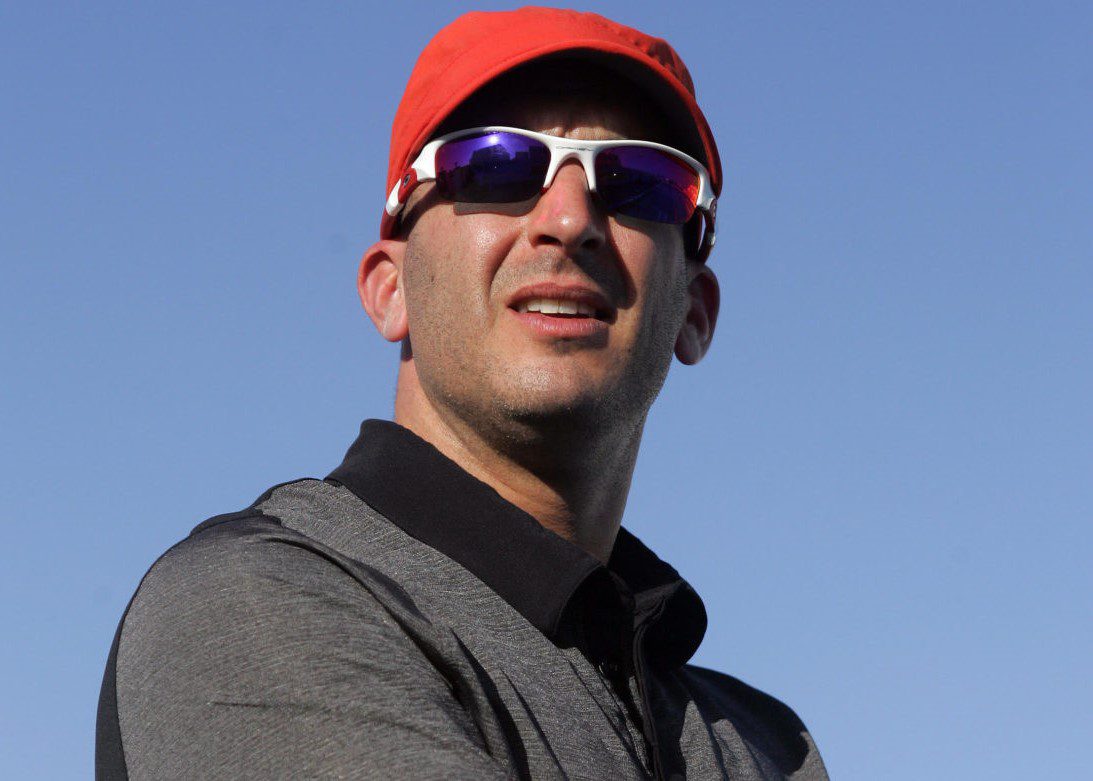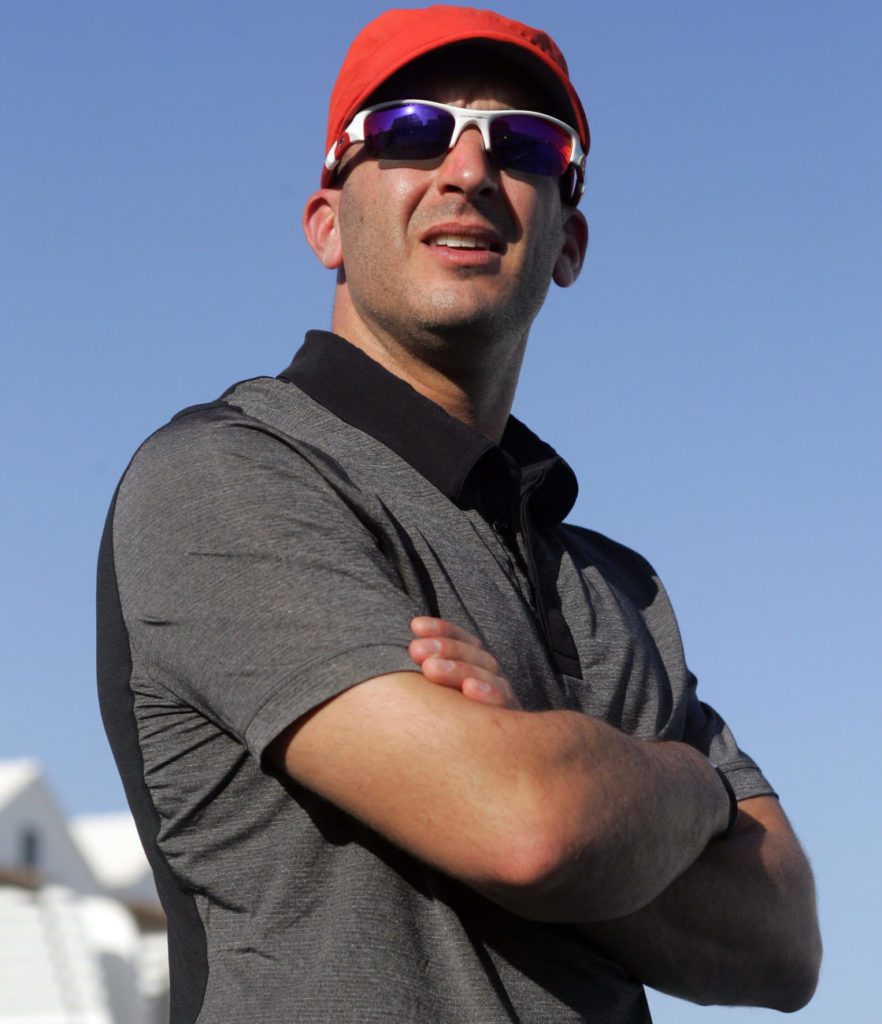Keeping Lionel on track: Q and A with David Tilbury-Davis
We look back to our archives for a story we did on David Tilbury-Davis, the coach Lionel Sanders worked with in 2017 and has decided to work with again.


Earlier today Lionel Sanders posted a YouTube video in which he announced that he’ll once again be working with David Tilbury-Davis, the coach he worked with for much of 2017.
Originally from Great Britain, David Tilbury-Davis got his start in the triathlon world at Loughborough University, the home of the British Triathlon Association. A former rugby and American Football player (who knew the UK was into that style of football?), Tilbury-Davis turned to cycling and triathlon after a knee injury forced him to look for a more “linear” sport.
By the late 90s he was spending a lot of time coaching and in 2008 gave up a career in the banking world to pursue coaching full time. He moved to The Woodlands, Texas in 2013 and now lives in Seattle, Washington. Tilbury-Davis coaches about 16 athletes, many of whom are pros.
We caught up with Tilbury-Davis two years ago ahead of Sanders’ runner-up finish in Kona to get some insights on his work with the Canadian star. Here’s that interview:
Triathlon Magazine Canada: How did you get started working with Lionel Sanders?
David Tilbury-Davis: I met Lionel at Ironman Texas the year he had a melt down on the run. I introduced myself to him there. And then I think our paths have crossed over time at the odd race … I remember after Kona last year Lionel said that he was looking for somebody to keep him on the straight and narrow.
So I got in touch with him and said “Look, this is how I do things and this is how I feel I could help you. Do you feel that could work for you?”
We had a long conversation and he said, “Yeah, I think that’s what I need.”
So, pretty much just after Kona I started guiding him as best I could as he got ready for Arizona. And then, after Arizona in early December, I went up for a couple of days with him and since then I’ve been up to see him a couple of times and do some work face to face with him, either planning both the season and the process and the specificity of some of his training sessions.
I’m really just trying to help him make better decisions on a detailed level with his training. If you want to choose a word that best describes the working relationship, I would say “mentor.” I don’t write out every training session, but I see everything that he does and provide feedback to him. And we talk about any relevant aspects of his training and racing. I try to act as a sounding board for ideas.
Lionel has described himself as not being particularly coachable.
We’ve definitely had some discussions where I’ve said, “I think this is how you should approach it” and I’ve needed to sort of really press and stress the reasons why. Lionel is an incredibly smart guy and super passionate about the sport and about learning. What I try to do is feed desire for education and insight. And I’m sure there will come a point where I have made myself redundant. I think that it’s the nature of any good coach is you should provide sufficient education that eventually you are sort of redundant.
When I spoke with Lionel in Penticton at the ITU Long Distance World Championship, he says he finally feels like he’s figuring the training out. As scary as that sounds for his competition, do you think he’s right?
He’s definitely putting some of the pieces together. I’ve encouraged him to be a little bit more objective in his decision making. Recently he’s done the occasional workout where he’s riding with a particular objective and he’ll say afterwards “I felt really good and I probably could have done another 10 minutes at that pace, but I didn’t.” I think the old Lionel would have just crushed that workout. The difference is that when you start to add up all those little cumulative stresses on the body you aren’t able to let you body adapt to the training. So he has definitely become more aware of just making smart decisions. That’s really evident with his swim.
The reality is with guys like Lionel or other individuals that I’ve worked with similar swim issues (like Cody Beals or Matt Hansen), they’ve all got huge engines. And so, it’s not a lack of swimming ability per say that holds them back, it’s a lack of ability to express the fitness that they have. So they actually do need to do quite a bit of skill work. I wouldn’t say technique – when you say technique people think drills – but it’s more of that skill acquisition and skill awareness stuff which may involve being blended into actual swimming. Then, once you start to ingrain that, you see a better expression of the fitness.
Heading into the world championship Lionel felt he was coming off the best 55 days of training he’d ever had. How do you top that getting ready for Kona?
What most people don’t realize is that in Penticton, if you do the math, his run turns out to be about a 2:28 marathon pace off the swim and bike. So you know he’s in great shape. The training blocks going into Kona are simply the icing on the cake – you’re not trying to put another level of fitness on top of that.
Lionel is renowned for doing a lot of indoor training. What are your thoughts on that?
Well I think he’s actually trained more outdoors this year than he had in the past. And there’s a very good reason for that, in terms of biomechanics. He still does a lot of training indoors because the area where he lives it is just flat out dangerous to be riding as much as he does outdoors. It’s a law of averages. You know he’s riding you know a significant amount of mileage each week. It’s basic statistics you’re going to get hit. And he was hit a couple of years ago. So, from a safety perspective he’s training indoors, but there have been some subtle differences this year. He’s moved to riding on rollers, which has been a game changer for him because it forced him to develop what the French would call “suplesse” on the bike. He looks a lot smoother a lot more stable. He doesn’t look like he’s trying to snap the bike in two. And that’s come from spending all that time riding on the rollers.
One of the guys I coached who lived in Finland and was training for Ironman Malaysia had to do a lot of indoor work – we just had to improvise because October in Finland is pretty chilly. It’s not that I am a proponent of indoor training. It’s more a case of if the circumstances. If it’s better from a weather perspective or better from a safety perspective to be doing things, then you do it. But they definitely need to do some running outdoors because there are biomechanical differences between running on the treadmill and running outdoors. It’s the same with the bike – if you spend a lot of time on a bike trainer you don’t develop a lot of trunk strength because you can reach across and grab a gel or the TV remote and not go anywhere.
It sounds to me like you follow an approach to take the stuff that’s working and keep doing that, while tinkering with the stuff that needs to change.
You know this is not rocket science and it isn’t cardiac surgery. There’s some fairly logical principles. When it comes to Kona it all comes down to an element of specificity. There’s really only one or two scenarios that play out. You know that the swim is blisteringly fast over the first hundred metres and then things settle out and then maybe a little bit of surging in the middle, particularly around the turns, and then everybody settles in to where they are. And then out on the bike 50 percent of the front pack treat the bike like it’s a 30-mile criterium.
You then need to decide “how do I play poker here.” It’s not the same for an age group racer. For them the fastest race comes from being as close to even as you can in all three sports. For the pros, at the championship level, you have to know when you should be taking chances and pushing harder. On the bike you know you need to be able to press fairly hard up Hawi (the turnaround point of the Ironman World Championship bike course) and then you need to be able to turn around and comfortably push the pace. If you can’t then you have a problem.
Are there any similar themes with the athletes you work with or does everything need to be seen on an individual basis?
All the training that I set or that I got people on is specific to them and their circumstances, along with their physiological strengths and weaknesses. You also have to keep analyzing where we are now and where we want to be in nine months. So, if you have an athlete who has won a bowl (age group prize) in Kona and wants to win another one, well we know that demands a certain level of performance. We know what that looks like, give or take about 10 minutes. So where do we need to be in training. You know what’s required along that six-month journey to end up in the position that you have the tools to deliver that performance mentally and physically on race day. It’s the same with any athlete. So, it is very specific to each individual, but it’s still triathlon.
I would just say philosophically I’m very evidence led. And I use that phrase to describe I get how I think about things because I look at the training for each individual and I’m looking at it from the point of view “do we understand why we’re doing this and what is the purpose of this session?”
I think with any coach you should be able to look at a training session that needs doing and you should be able to explain the purpose of the workout physiologically, psychologically or neurologically. If you can’t break down a session to what its core purpose is then you know pretty much that training plan is just guessing.
